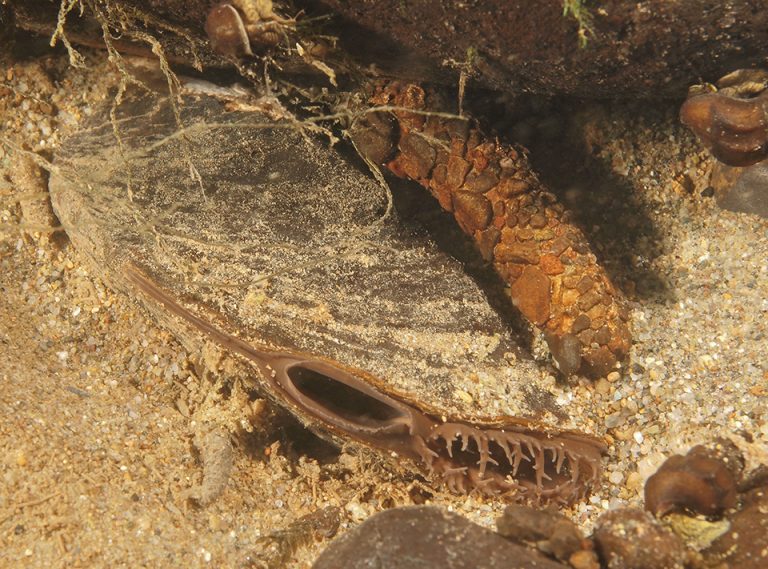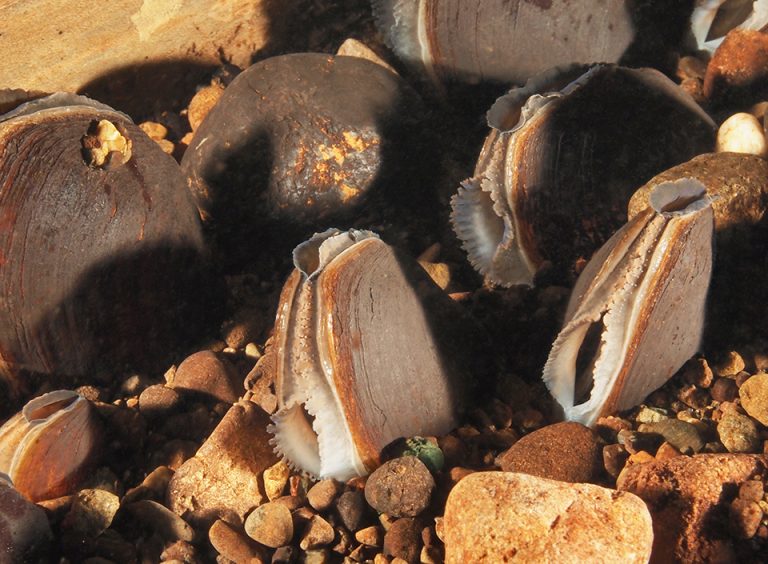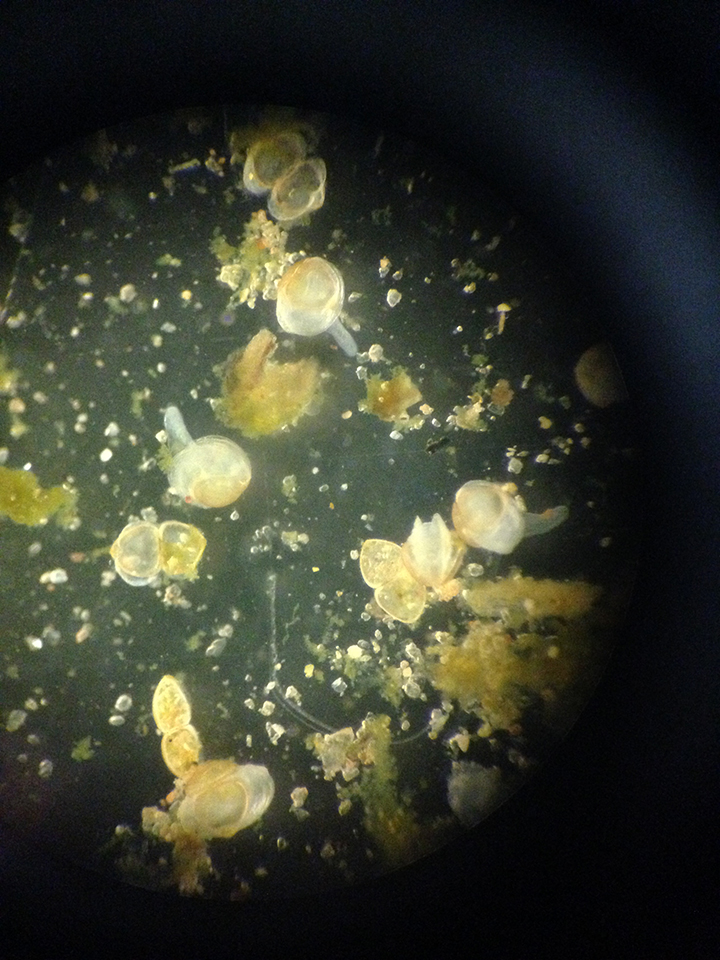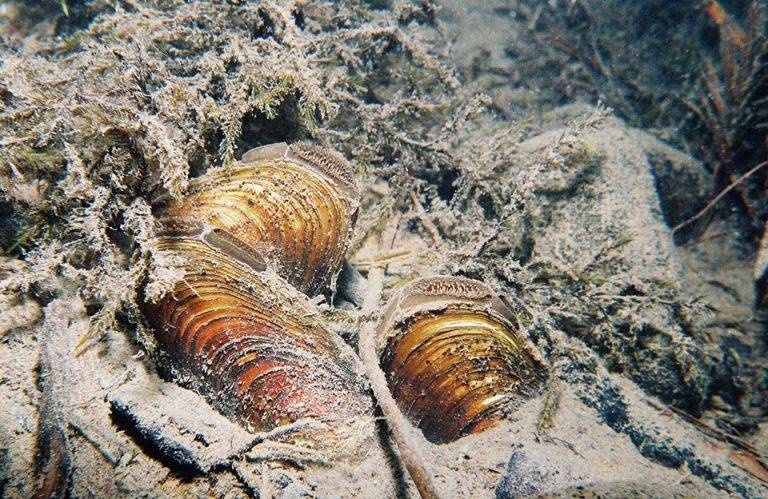This week, the International Union for Conservation of Nature (IUCN) published the second update this year to the Red List of Threatened Species. The Red List is an important tool for biologists and policymakers because it highlights which species are at greatest risk of going extinct and can be used to set priorities for conservation. Among those species included in the latest update are four species of freshwater mussels from western North America. Two species, the western ridged mussel (Gonidea angulata) and the winged floater (Anodonta nuttalliana), were categorized as Vulnerable, the western pearlshell (Margaritifera falcata) as Near Threatened, and the Oregon floater (Anodonta oregonensis) as Least Concern. This may not seem newsworthy, but to gain such recognition for freshwater mussels is a significant step forward for a group of animals generally overlooked by both river users and conservationists.

There are around 840 species of freshwater mussels found worldwide. Although more than 300 species occur in North America, only a half dozen are found in states west of the Rocky Mountains. Despite this relative paucity of species, freshwater mussels quietly and unobtrusively play an important role in healthy freshwater systems. They filter water, capture and concentrate food for other aquatic species, and may remain nearly totally buried in the bottoms of lakes and streams for years. Individual mussels can live for decades, but you might never know they were there if it weren’t for the evidence of shell middens, the piles of shells along banks and shorelines left by predators like otters, which rely on mussels as a food source, especially when other food is rare.
To date, fewer than 500 of the world’s freshwater mussel species have been evaluated under the Red List. Somewhat alarmingly, more than 70% of North American mussel species are extinct or imperiled, making freshwater mussels among the most at-risk group of animals, and not just for invertebrates.
The addition of these four western species (see note below) to the Red List represents a major milestone for the Xerces Society and our partner, the Confederated Tribes of the Umatilla Indian Reservation (CTUIR) in northeastern Oregon. Because freshwater mussels were traditionally harvested and are an irreplaceable element of western rivers, CTUIR has taken a leading role in western mussel conservation since establishing their mussel project in 2003. The initial goals of this project were to map the distribution of western mussels and study their biology. Results from their early surveys supported observations from biologists elsewhere: western mussels are missing from habitats where they once thrived.

In 2008, we partnered with CTUIR, mussel researchers, and the Pacific Northwest Native Freshwater Mussel Workgroup to update and expand a list of western mussel observations that have been reported since the species were first identified in 1836. This work provided the basis for the species being added to the IUCN Red List (but see the note below about IUCN maps). Records were gathered from specimens scattered among museums, observations listed in reports from early biological surveys along the boundaries of the new western territories, names published in papers discussing research on anatomy and reproduction, and location data harbored within biologist’s field notes. Records were pulled from over 150 publications, and more than 175 researchers, museums, tribes, agencies, and “musselheads” shared their data with us. Together, these records provided clues to the historic distribution of freshwater mussels and could be compared to a map of their current distribution. By overlaying these maps, it would be easy to see where biologists no longer find these species.
By 2015, armed with just over 2,000 historic records and more than 5,200 recent records, we were able to map the distributions of each species and answer the question: have western mussels declined from their historic ranges to an extent that would make them at risk of extinction?
Having compiled so many records you might expect these species to be thriving, but our analyses and research by others indicates that two species (the western ridged mussel and winged floater) are Vulnerable and one (the western pearlshell) is Near Threatened. Only one species (the Oregon floater) does not appear to face heightened extinction risk under IUCN Red List criteria, though even it has been lost from some parts of its historic range. In particular, the western ridged mussel has been lost from as much as 43% of its historic range.
Why might these species be imperiled? Specific causes are not known, but habitat loss and degradation, dams and other barriers, water pollution, water use, drought, impacts to host fish, and invasive species are all implicated. The loss of these species is important for us to consider—mussels filter toxins from water that many of us swim in or drink, and they stabilize and enrich the riverbeds that provide habitat for native salmon. We haven’t yet assessed their value in providing ecosystem services in terms of dollars and cents, but it should be no secret that freshwater mussels are invaluable.

Red List assessments are really just a first step for conservation; now we must act. We have already shared these results with state fish and wildlife agencies, who recently added western mussels to their lists of Species of Greatest Conservation Need, making them eligible for funding to complete conservation and restoration projects. CTUIR is using information from their mussel surveys to plan for restoration projects and have been developing mussel rearing techniques in their Aquatic Propagation Lab to establish new populations. We’re using information from this analysis to develop strategies and guidelines for protecting and conserving western mussel populations. To learn more about the biology, ecology, and conservation status of western mussels, check out the Red List assessments at http://www.iucnredlist.org/, and if you’d like to share your observations of freshwater mussels, contact us at mussels@xerces.org.
Thank you to all those who contributed their observations, data, and expertise for this effort!

-----
Notes
How many species of freshwater mussels are found in the western states? Although past authors have identified the California floater and the western floater as distinct species, we based this research on four of the six western species recognized in MolluscaBase. We did not have enough information to assess the Yukon floater (Anodonta beringiana) or the woebegone floater (Anodonta dejecta).
Distribution maps on IUCN Red List webpages. The distribution maps currently accessed through the IUCN represent the data from earlier assessments. Red List managers are aware of this, and the maps will be updated to show the latest assessment as soon as possible.



